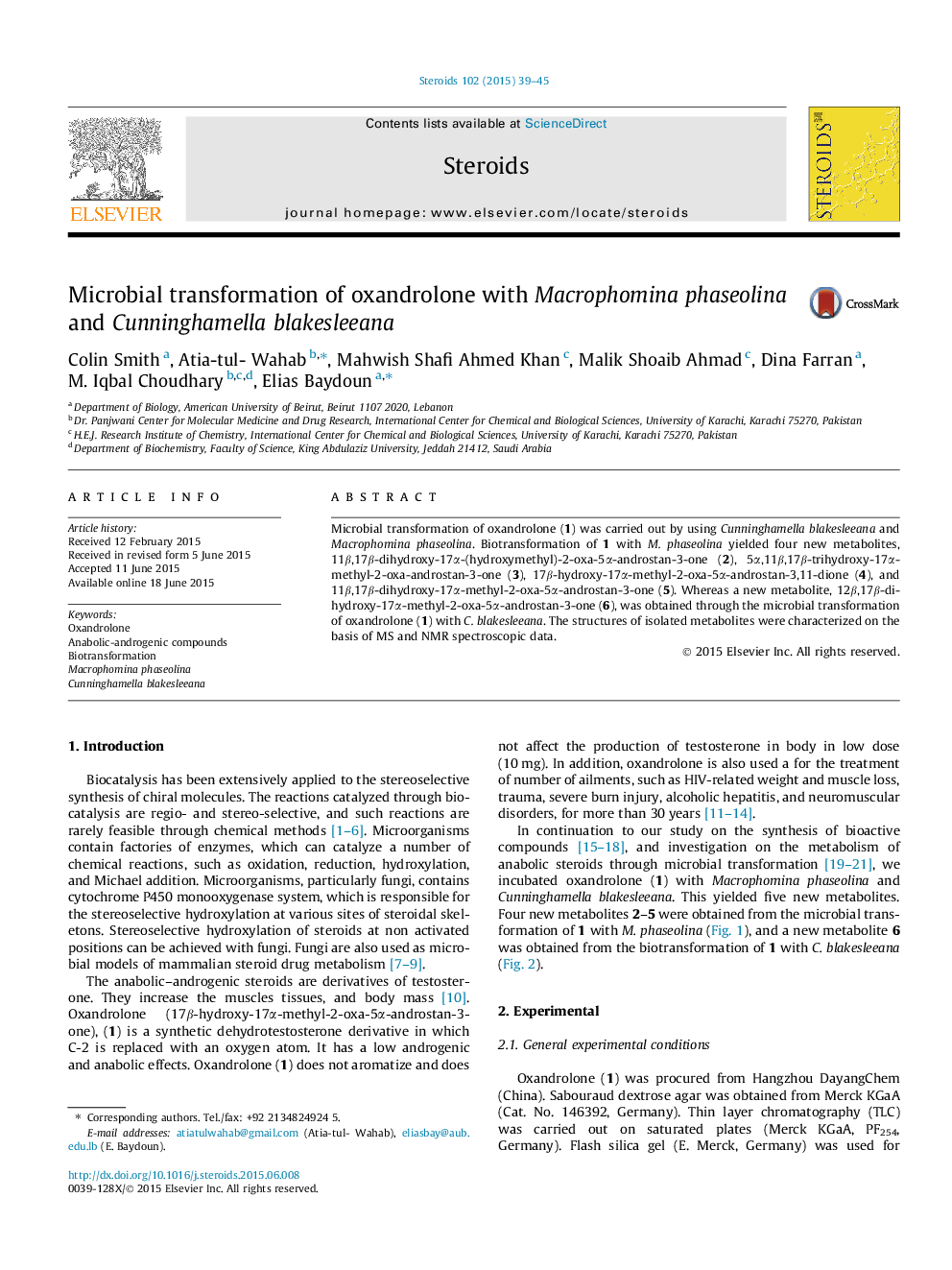| کد مقاله | کد نشریه | سال انتشار | مقاله انگلیسی | نسخه تمام متن |
|---|---|---|---|---|
| 2027542 | 1542706 | 2015 | 7 صفحه PDF | دانلود رایگان |

• Oxandrolone (1) was subjected to biotransformation with two fungi.
• Four new metabolites 2–5 were obtained on incubation with M. phaseolina.
• One new metabolite 6 was isolated on fermentation with C. blakesleeana.
• C-5, C-11, C-12, and C-20 were the common sites of functional group modification.
Microbial transformation of oxandrolone (1) was carried out by using Cunninghamella blakesleeana and Macrophomina phaseolina. Biotransformation of 1 with M. phaseolina yielded four new metabolites, 11β,17β-dihydroxy-17α-(hydroxymethyl)-2-oxa-5α-androstan-3-one (2), 5α,11β,17β-trihydroxy-17α-methyl-2-oxa-androstan-3-one (3), 17β-hydroxy-17α-methyl-2-oxa-5α-androstan-3,11-dione (4), and 11β,17β-dihydroxy-17α-methyl-2-oxa-5α-androstan-3-one (5). Whereas a new metabolite, 12β,17β-dihydroxy-17α-methyl-2-oxa-5α-androstan-3-one (6), was obtained through the microbial transformation of oxandrolone (1) with C. blakesleeana. The structures of isolated metabolites were characterized on the basis of MS and NMR spectroscopic data.
Figure optionsDownload as PowerPoint slide
Journal: Steroids - Volume 102, October 2015, Pages 39–45